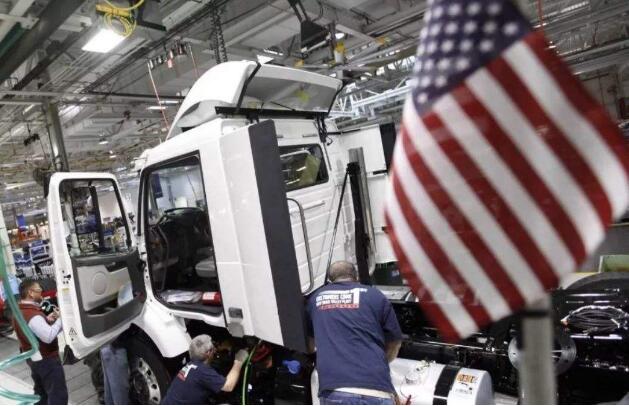
In recent years, the US government has put forward the "manufacturing reshoring" strategy, aiming to attract overseas enterprises to return to invest and revive the local manufacturing industry through a series of policy measures. However, this grand blueprint has encountered unprecedented challenges and difficulties in the process of implementation. The latest data show that nearly 40% of the US manufacturing reshoring projects have been forced to postpone, which reveals the bumpy road to the US manufacturing reshoring.
The reshoring of manufacturing industry is a strategic idea proposed by the US government to deal with the hollowing out of industry and the loss of employment brought about by globalization. Its original intention is to reduce production costs through tax cuts, subsidies, infrastructure improvements and other means to enhance the competitiveness of local manufacturing, and thus promote economic growth and job creation. However, while the ideal is full, the reality is thin.
First of all, high labor costs, complex regulatory environment and relatively high energy prices in the United States are important factors restricting the return of manufacturing.
Compared with Asia and other low-cost regions, the United States has a significant disadvantage in these areas, which makes companies think twice about investment decisions. Even with tax breaks and subsidies, long-term operating costs are hard for companies to ignore.
Secondly, the high integration and complexity of the global supply chain is also another major challenge facing the repatriation of manufacturing. Modern manufacturing industry is no longer a simple "production-sales" model, but involves raw material procurement, parts production, assembly, logistics, sales and other links of a complex network. Once reshoring is chosen, enterprises need to rebuild or adjust their supply chain system, which not only requires huge investment, but also may face supply chain disruption, delivery delays and other risks.
In addition, the U.S. manufacturing industry is also facing the serious challenge of a shortage of skilled personnel.
With the continuous progress of technology and the adjustment of industrial structure, the demand for highly skilled personnel is increasing day by day. However, there is a disconnect between the US education system and market demand, resulting in a large number of job vacancies that are difficult to fill. Even if companies are willing to return, they may be stuck because they cannot find the right staff.
In the face of these challenges, it is not difficult to understand that the US manufacturing reshoring project has suffered setbacks. Nearly four in 10 projects are delayed, both as a direct reflection of current difficulties and as a prudent response to future uncertainty.
The volatility of the global economic situation has had a profound impact on the repatriation of manufacturing. In recent years, the uncertainty of the international trade environment has increased, trade protectionism has risen, and tariff barriers have increased, which have increased the operating costs and market risks of multinational enterprises. In this context, companies are more inclined to maintain flexibility and diversification, rather than a desperate return to the United States.
The policy adjustment of the US government is also one of the important reasons for the delay of the project. Although the government has promised to support the return of manufacturing through tax cuts, subsidies and other means, the implementation effect of these policies often takes time to verify. At the same time, frequent policy changes also bring uncertainty to enterprises, making enterprises more cautious in investment decisions.
The company's own strategic adjustment is also one of the reasons for the project delay. In the context of global industrial chain restructuring, enterprises need to re-evaluate their market positioning, product structure and supply chain layout. For some companies, returning to the United States may not be the best choice, but need to adjust flexibly according to market changes and their own needs.
The setback of the US manufacturing backflow is only a microcosm in the complex picture of global industrial chain reconstruction. With the deepening of globalization, the economic links between countries have become increasingly close, and the deep integration of industrial, supply and value chains has become an irreversible trend.
In general, the setback of the US manufacturing reflux is not only a test of the United States' own strategic choices, but also an inevitable pain in the process of global industrial chain restructuring. In the face of the complex and changing international environment and domestic challenges, the government and enterprises of the United States and other countries need to maintain a sober and pragmatic attitude, strengthen cooperation and exchanges, and jointly promote the healthy and stable development of the global industrial chain.

In December 2025, the United States' aggressive move of consecutively seizing two oil tankers near Venezuela's waters pushed the US - Venezuela relations to a new peak of confrontation.
In December 2025, the United States' aggressive move of con…
On December 19, the Bank of Japan unanimously approved a re…
Recently, the international community witnessed two rather …
Donald Trump's proposal to directly distribute $2,000 cash …
The moment the U.S. military's F-35A stealth fighter landed…
In the tech world at the end of 2025, an unprecedented fina…